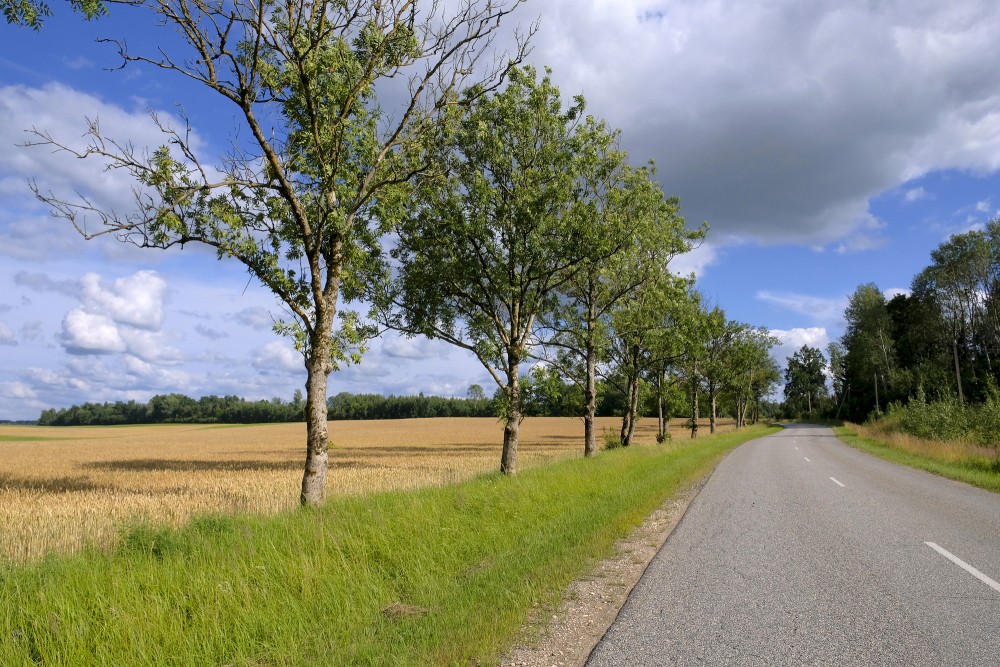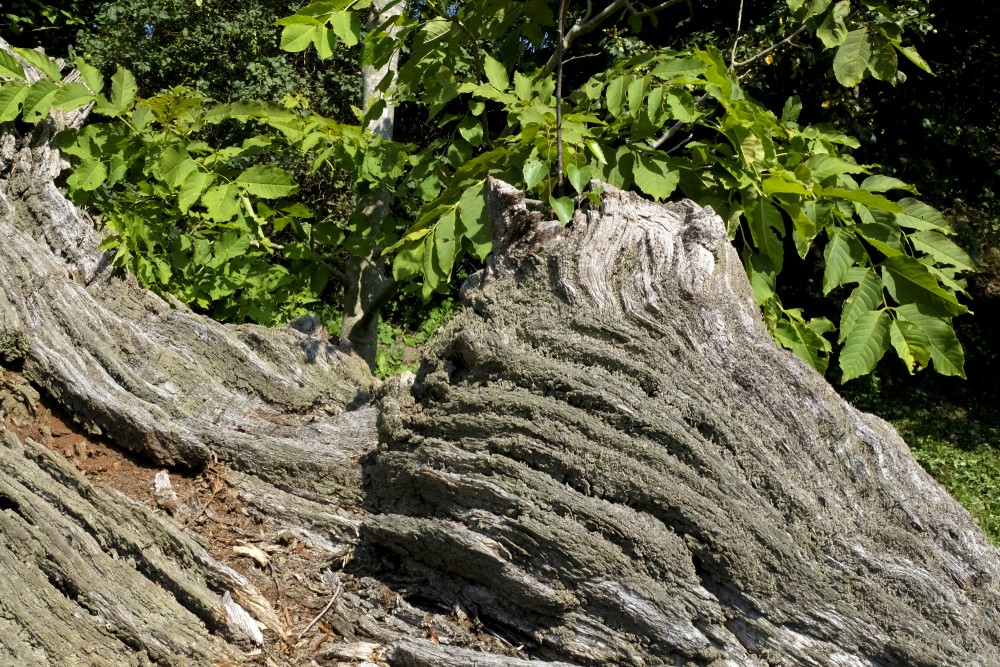Fraxinus excelsior (Common ash)
Fraxinus excelsior, known as the ash, or European ash or common ash to distinguish it from other types of ash, is a flowering plant species in the olive family Oleaceae. It is native throughout mainland Europe east to the Caucasus and Alborz mountains. The northernmost location is in the Trondheimsfjord region of Norway. The species is widely cultivated and reportedly naturalised in New Zealand and in scattered locales in the United States and Canada.
| Fraxinus excelsior | |
| Kingdom: | Plantae |
| Clade: | Angiosperms |
| Clade: | Eudicots |
| Clade: | Asterids |
| Order: | Lamiales |
| Family: | Oleaceae |
| Genus: | Fraxinus |
| Section: | Fraxinus sect. Fraxinus |
| Species: | F. excelsior |
Description
It is a large deciduous tree growing to 12–18 m (39–59 ft) (exceptionally to 43 m or 141 ft) tall with a trunk up to 2 m (6.6 ft) (exceptionally to 3.5 m or 11 ft) diameter, with a tall, narrow crown. The bark is smooth and pale grey on young trees, becoming thick and vertically fissured on old trees. The shoots are stout, greenish-grey, with jet black buds (which distinguish it from most other ash species, which have grey or brown buds). The leaves are opposite, 20–35 cm (7.9–13.8 in) long, pinnately compound, with 7–13 leaflets with coarsely serrated margins, elliptic to narrowly elliptic, 3–12 cm (1.2–4.7 in) long and 0.8–3 cm (0.31–1.18 in) broad and sessile on the leaf rachis. There are no stipules. These features distinguish ash from mountain ash (Sorbus aucuparia) in which the leaves are alternate with paired stipules. The leaves are often among the last to open in spring, and the first to fall in autumn if an early frost strikes; they have no marked autumn colour, often falling dull green. The flowers are borne in short panicles, open before the leaves, and have no perianth. The female flowers are somewhat longer than the male flowers, dark purple, without petals, and are wind-pollinated. Both male and female flowers can occur on the same tree, but it is more common to find all male and all female trees. A tree that is all male one year can produce female flowers the next, and similarly a female tree can become male. The fruit is a samara 2.5–4.5 cm (0.98–1.77 in) long and 5–8 mm (0.20–0.31 in) broad, often hanging in bunches through the winter; they are often called 'ash keys'. If the fruit is gathered and planted when it is still green and not fully ripe, it will germinate straight away, however once the fruit is brown and fully ripe, it will not germinate until 18 months after sowing (i.e. not until two winters have passed).
European Ash rarely exceeds 250 years of age. However, there are numerous specimens estimated between 200 and 250 years old and there are a few over 250. The largest is in Clapton Court, England and is 9 m (29.5 ft) in girth. There are several examples over 4.5 metres (14.8 ft) in Derbyshire alone.
Distribution
Fraxinus excelsior is native to Europe from northern Spain to Russia, and from southern Fennoscandia to northern Greece. It is also considered native in southwestern Asia from northern Turkey east to the Caucasus and Alborz mountains. The northernmost location is in the Trondheimsfjord region of Norway. The species is widely cultivated and reportedly naturalized in New Zealand and in scattered locales in the United States and Canada including Nova Scotia, New Brunswick, Quebec, Massachusetts, Connecticut, New York, New Jersey, Maryland, Ontario, Ohio, Kentucky and British Columbia.
It is native throughout the British Isles, particularly on limestone, as in northern Scotland, where the most northerly native ashwood in the British Isles occurs on limestone at Rassal Ashwood. It is widely planted elsewhere.
Ecology
Ash occurs on a wide range of soil types, but is particularly associated with basic soils on calcareous substrates. The most northerly ashwood in Britain is on limestone at Rassal, Wester Ross, latitude 57.4278 N. Ash prefers moister soil types and is commonly limited by temperature and so not found at the higher colder altitudes in much of Europe, though in Iran, it may reach 2000 m asl. As a young seedling, it is shade tolerant, but older trees are light-demanding. It is an early-succession species and may well outcompete beech and oak, which are later-succession species.
F. excelsior mycorrhizae are of the internal arbuscular mycorrhizal type, in which the fungus grows within the tissues of the root and forms branched, tree-like structures within the cells of the root cortex. Unlike other Fraxinus species, F. excelsior does not form ectomycorrhizae.
The Biological Records Centre of the UK records 111 species of insects and mites using ash as a food plant, of which 29 are specific to ash. A further six are specific to ash and its Oleaceae relative wild privet (Ligustrum vulgare). A number of Lepidoptera species use the species as a food source. One example of an ash-specific feeding moth is the centre-barred sallow (Atethmia centrago). The larvae burrow into the buds when newly hatched and later feed on the flowers and leaves. A common moth which causes the browning of ash leaves, as well as garden privet and lilac, is Gracillaria syringella. The usually gregarious larvae form an epidermal gallery (i.e. feed within the leaf) which leads to a brown blotch with black frass. Later, two successive cones are formed by folding the tip of a leaf downwards.
In Britain, 14 galls have been recorded on ash. The British Plant Gall Society defines a gall as "... an abnormal growth produced by a plant under the influence of another organism".
Ash dieback
Ash dieback is caused by the fungus Hymenoscyphus fraxineus which was previously known as Chalara fraxinea. Research into the genetics of the resistance of ash (Fraxinus excelsior) has shown that resistance does occur in European populations, but at least for the samples tested, it is neither common nor strong.
en.wikipedia.org






